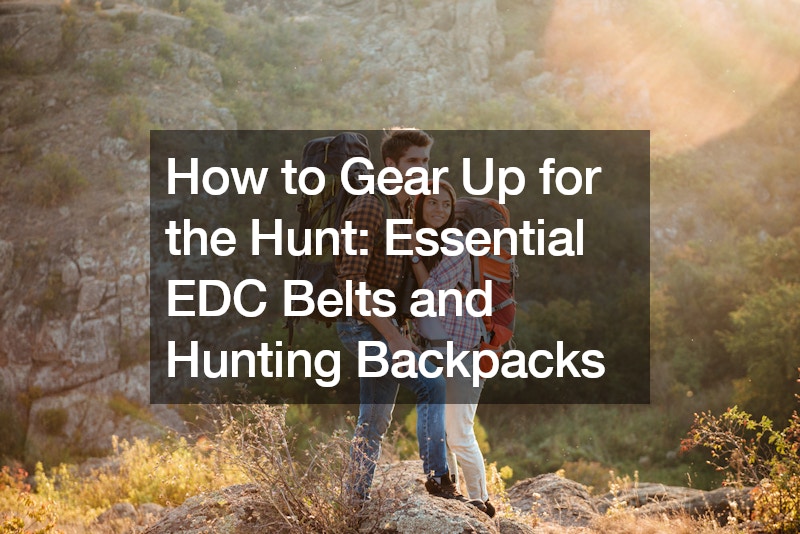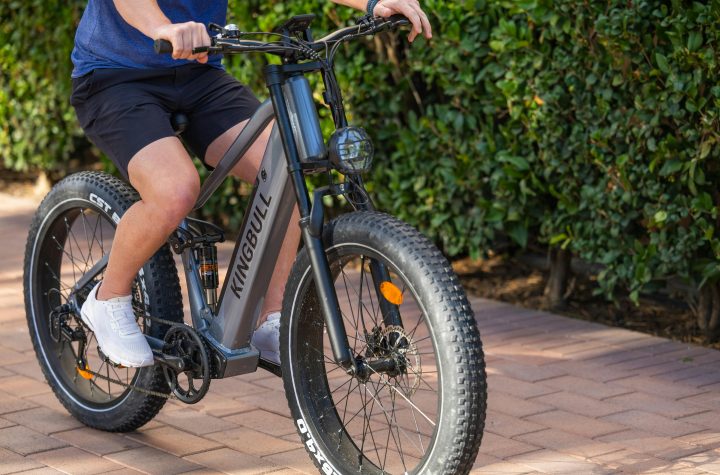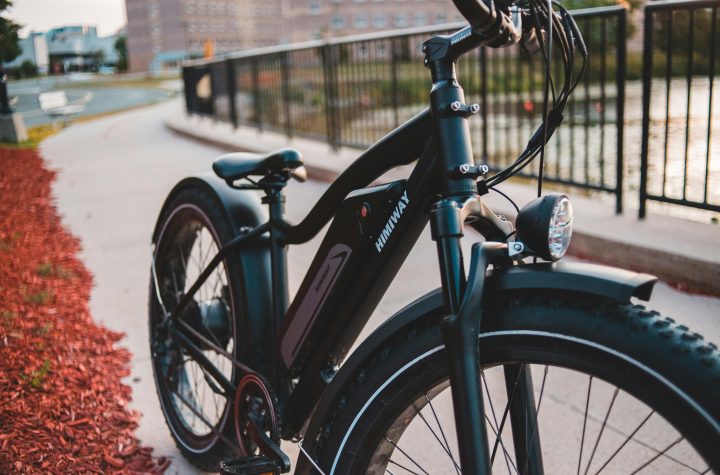

Gearing up for a hunt requires careful consideration of the essential tools and equipment needed for a successful outing. Among these items, two key pieces stand out: EDC belts and hunting backpacks. These accessories play a crucial role in ensuring that hunters are well-prepared and equipped to handle various situations in the field.
Essential EDC Belts: A Hunter’s Utility Tool
An everyday carry (EDC) belt is more than just a fashion accessory; it serves as a versatile tool for hunters, providing a convenient way to carry essential gear and equipment. Whether trekking through rugged terrain or navigating dense forests, hunters rely on their EDC belts to keep important items within reach.
One of the most valuable features of EDC belts is their ability to accommodate a wide range of accessories. From holsters and pouches to multi-tools and flashlights, these belts offer ample space for storing essential gear. Additionally, many EDC belts feature durable construction and adjustable designs, allowing hunters to customize their setup based on individual preferences and needs.
Selecting the Right Hunting Backpacks: Practical Considerations
When it comes to hunting backpacks, choosing the right one can make all the difference in terms of comfort, functionality, and overall performance. These specialized packs are designed to withstand the rigors of outdoor adventures while providing ample storage space for gear, supplies, and game.
A quality hunting backpack should offer several key features to meet the demands of the hunt. These include:
- Durability: Hunting backpacks need to withstand rugged conditions, including rough terrain and inclement weather. Look for packs made from high-quality materials such as ripstop nylon or reinforced polyester, which offer excellent durability and resistance to wear and tear.
- Storage Capacity: The ideal hunting backpack should provide sufficient storage space for all essential gear, including hunting accessories, food and water, first aid supplies, and extra clothing layers. Consider the size and layout of compartments, as well as any additional features such as external pockets or attachment points for gear.
- Comfort and Support: Since hunters may spend hours carrying their packs over long distances, comfort is paramount. Look for backpacks with padded shoulder straps, adjustable waist belts, and ergonomic designs that distribute weight evenly across the body. Ventilation features such as mesh panels or breathable padding can also help reduce sweat and discomfort during extended wear.
- Versatility: A versatile hunting backpack should be adaptable to various hunting scenarios and environments. Look for packs with modular designs or customizable configurations that allow for easy organization and access to gear. Features such as removable compartments, expandable storage options, and compatibility with hydration systems can enhance versatility and functionality in the field.
Maximizing Utility with EDC Belts and Hunting Backpacks
By combining the practical utility of EDC belts with the storage capacity and functionality of hunting backpacks, hunters can optimize their gear setup for maximum efficiency and effectiveness in the field. EDC belts provide a convenient way to carry essential tools and accessories, while hunting backpacks offer ample space for storing gear and supplies needed for extended hunts.
When selecting EDC belts and hunting backpacks, hunters should prioritize durability, storage capacity, comfort, and versatility to ensure that their gear meets the demands of their hunting adventures. By investing in high-quality equipment that is well-suited to their needs, hunters can enhance their overall hunting experience and increase their chances of success in the field.
Hunting is more than just a sport; it’s a passion that requires meticulous preparation and the right gear. Among the essential equipment for any hunter are EDC belts and hunting backpacks. These items not only facilitate convenience but also contribute significantly to your comfort and success in the field. Let’s delve into how you can gear up effectively for your next hunting expedition.
Selecting the Right EDC Belt
An Everyday Carry (EDC) belt is a crucial part of a hunter’s arsenal. It serves as a foundation for carrying essential tools and equipment, providing both support and accessibility. When choosing an EDC belt, consider the following factors:
- Durability: Opt for a belt made from sturdy materials like nylon or reinforced leather. These materials can withstand the rigors of outdoor use and won’t fray or weaken easily.
- Versatility: Look for a belt with modular attachment points or MOLLE compatibility. This allows you to customize your setup based on your specific needs, whether it’s carrying a knife, flashlight, or other accessories.
- Adjustability: Ensure that the belt offers a wide range of adjustment to accommodate different waist sizes and layering options, such as wearing it over bulky clothing during colder weather.
- Security: Seek belts with reliable buckle mechanisms that provide a secure fit and won’t accidentally come undone, especially when traversing rough terrain or navigating obstacles.
- Comfort: Prioritize belts with padding or ergonomic designs that distribute weight evenly and prevent discomfort, even during extended periods of wear.
- Water Resistance: While not essential, water-resistant or quick-drying belts can be advantageous in wet conditions, helping to keep your gear dry and preventing discomfort from moisture absorption.
Hunting Backpack Essentials
A well-equipped hunting backpack is indispensable for carrying essential gear, supplies, and harvested game during your hunting expeditions. Here’s how to choose the right hunting backpack:
- Capacity: Consider the size of the backpack based on the duration and nature of your hunts. For day trips, a smaller pack may suffice, while longer excursions or big game hunts may require a larger capacity.
- Organization: Look for backpacks with multiple compartments, pockets, and attachment points for efficient organization of gear and easy access to essentials such as hunting knives, first aid kits, and navigation tools.
- Comfort and Support: Opt for backpacks with padded straps, waist belts, and back panels to minimize strain and ensure comfort, especially when carrying heavy loads over long distances.
- Durability: Choose backpacks made from rugged materials like ripstop nylon or Cordura® fabric, reinforced stitching, and sturdy zippers to withstand rough handling and harsh outdoor conditions.
- Specialized Features: Depending on your hunting style and preferences, consider backpacks with specialized features such as hydration reservoir compatibility, rifle or bow carrying systems, and integrated rain covers or blaze flags for added versatility and convenience.
- Fit and Adjustability: Ensure the backpack fits snugly and can be adjusted to distribute weight evenly across your body, preventing fatigue and discomfort during extended hunts.
Conclusion
Investing in quality EDC belts and hunting backpacks is essential for any serious hunter. By carefully considering factors such as durability, versatility, comfort, and specialized features, you can gear up effectively for your next hunting adventure. Whether you’re stalking game in the backcountry or setting up a blind in your favorite hunting spot, the right gear can make all the difference in your comfort, preparedness, and success in the field.
.





More Stories
How Cycling Helps With Weight Loss
Your Basic Guide to Buying From a New Boat Sales Service
Where to Get Ski and Snowboard Rentals